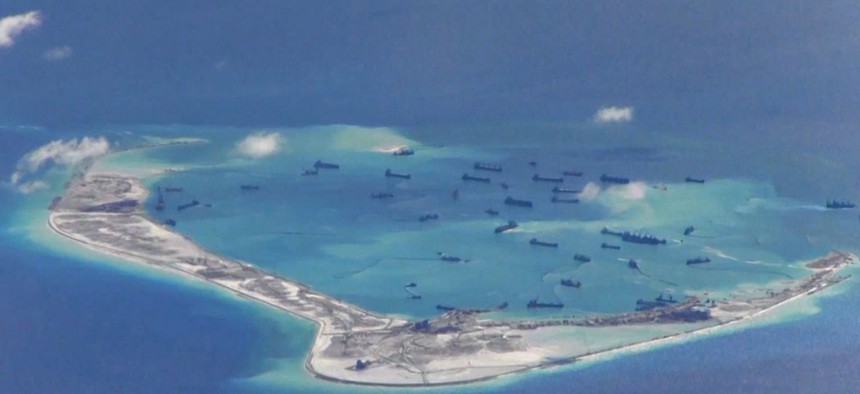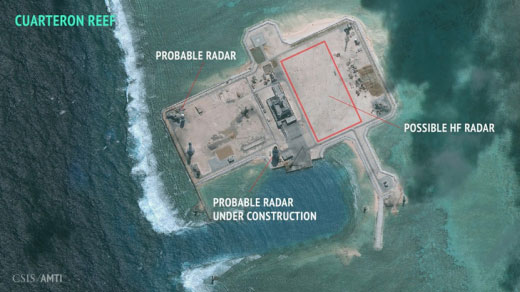
China's new radar installation raises the stakes in Pacific
The installation, along with other activities, changes the operational landscape in the South China Sea, the Navy and analysts warn.
China's deployment of new radar facilities in the contested Spratly Islands "could significantly change the operational landscape in the South China Sea," asserts a new report on the military situation in the western Pacific.
The report, released this week by the Center for Strategic and International Studies (CSIS), follows earlier reports that the Chinese military has deployed HQ-9 surface-to-air missiles on Woody Island in the South China Sea. However, CSIS analysts concluded that the missiles do not alter the military balance in the region.
The missile batteries capable of targeting aircraft at ranges of up to 125 miles represent a "notable tactical development, but a far more significant strategic signal," the Washington-based think tank stressed.

A satellite image released by CSIS and the Asian Maritime Transparency Initiative shows recent activity in the artificial Spratly Islands.
Of greater strategic significance are radar installations being erected on artificial islands constructed in recent years by the People's Liberation Army and China’s Navy. CSIS analysts said several 65-foot poles have been appeared on satellite imagery as part of what they believe is a high-frequency radar installation.
When operational, the radar installation "would significantly bolster China’s ability to monitor surface and air traffic across the southern portion of the South China Sea," the CSIS report concludes.
The Chinese military has over-the-horizon radar capabilities based on the mainland, and a high-frequency radar installation offshore in the Spratlys would boost its ability to monitor surface and air traffic through the Malacca Straits to the south, a vital shipping lane.
"Improved radar coverage is an important piece of the puzzle—along with improved air defenses and greater reach for Chinese aircraft—toward China’s goals of establishing effective control over the sea and airspace" in the western Pacific, the report notes.
As the U.S undertakes a strategic "pivot" toward East Asia, Navy brass are raising concerns about militarization of the disputed islands, which are also claimed by Vietnam and the Philippines. China’s build-up in the South China Sea, along with increased activity by Russia, last year prompted the Defense Department to support a new institute dedicated to monitor their activities. U.S. military officials also have expressed concern that nations such as Russia and China are pulling ahead of the United States in electronic warfare.
"In my opinion, China is clearly militarizing the South China Sea," Adm. Harry B. Harris Jr. told the Senate Armed Services Committee this week. Citing the surface-to-air missile and radar installations along with construction of a 10,000-foot runway on the artificial islands and reefs, Harris added: "These are actions that are changing, in my opinion, the operational landscape in the South China Sea."